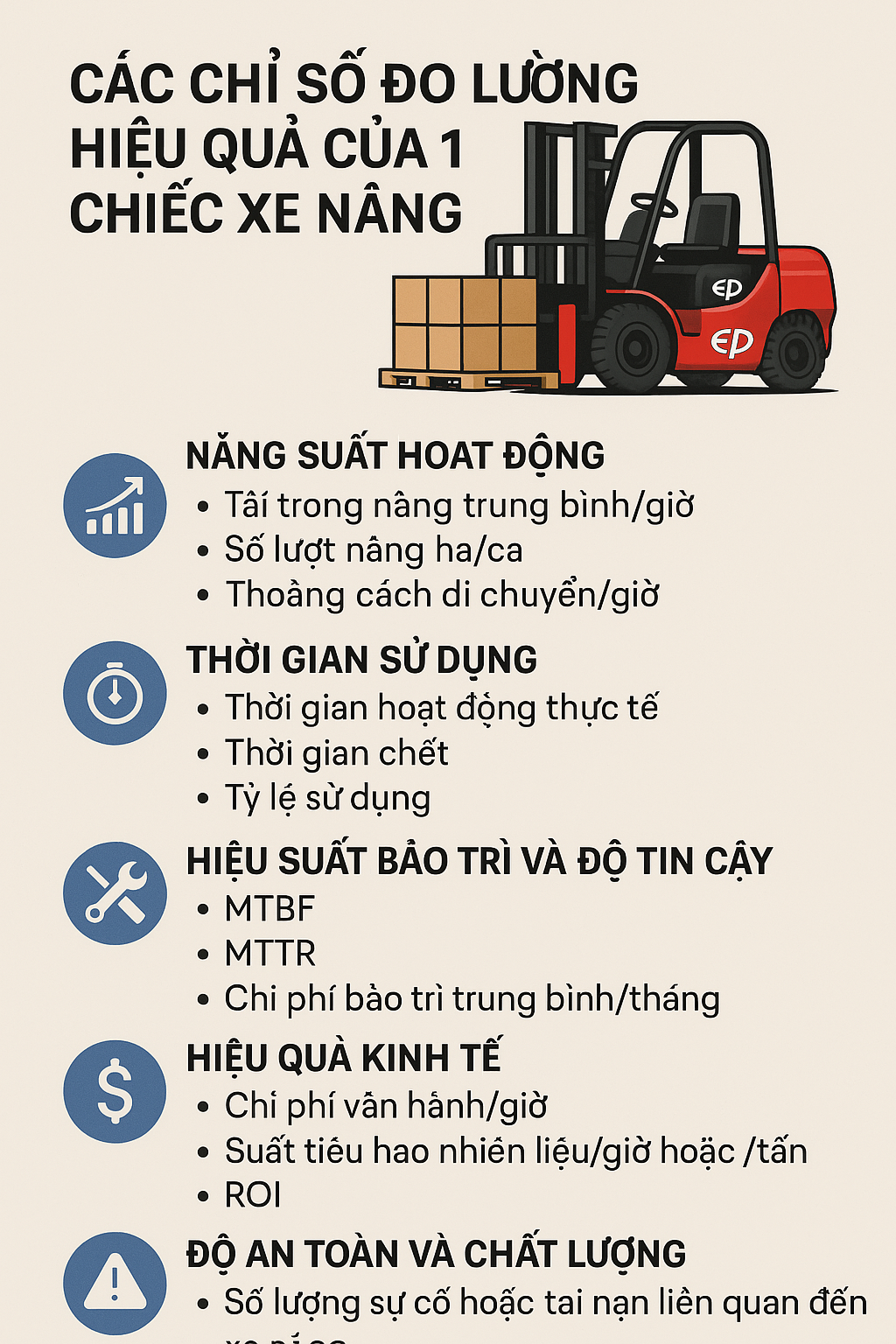Key Performance Indicators for Forklift Efficiency
To evaluate the efficiency of a forklift during operation, the following Key Performance Indicators (KPIs) are commonly used:
📊 1. Operational Productivity
-
Average Load per Hour: Amount of goods (kg or pallets) handled per hour.
-
Lifts per Shift: Total number of lifting/lowering operations in one shift.
-
Travel Distance per Hour: Total distance the forklift travels during operations.
⏱ 2. Utilization Time
-
Operating Time: Total actual working hours of the forklift.
-
Downtime: Time when the forklift is not in use due to maintenance, repair, or waiting.
-
Utilization Rate = Operating Time / Total Available Time (%).
🛠 3. Maintenance Performance & Reliability
-
MTBF (Mean Time Between Failures): Average time between breakdowns.
-
MTTR (Mean Time To Repair): Average time required to repair the forklift.
-
Average Monthly Maintenance Cost: Total maintenance/repair cost per month.
💰 4. Economic Efficiency
-
Operating Cost per Hour: Includes fuel, maintenance, depreciation, driver salary, etc.
-
Fuel Consumption per Hour or per Ton: Fuel used per hour or per load.
-
ROI (Return on Investment): Profitability of forklift investment.
📦 5. Safety and Quality
-
Number of Incidents or Accidents involving forklifts.
-
Product Damage Rate due to forklift handling.
-
Compliance Rate with Safety Procedures during operations.
If you’re managing a forklift fleet or analyzing the investment efficiency of a new forklift, I can help you create a KPI dashboard tailored to your specific goals. Which area are you planning to apply these indicators in? (warehouse, manufacturing, logistics…?)



